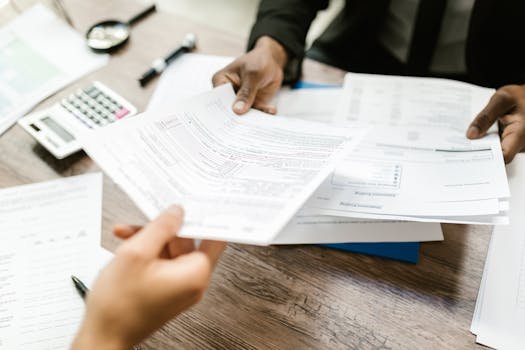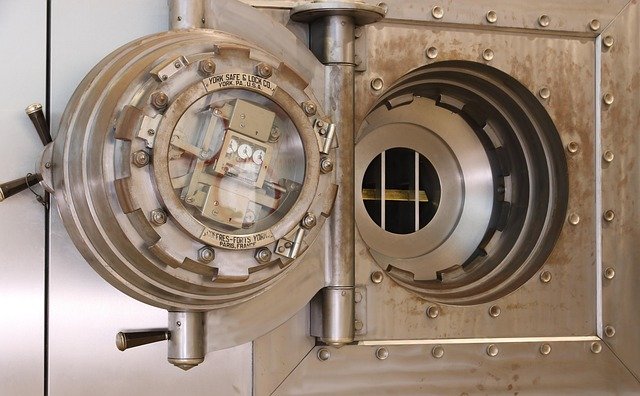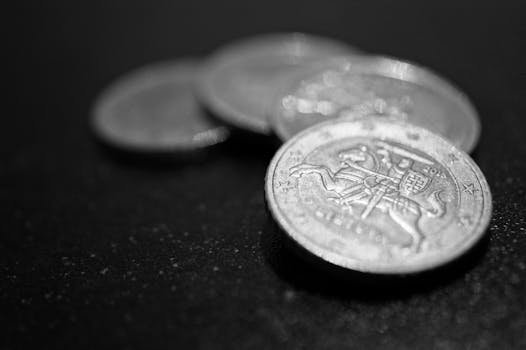VAT, Margin Schemes & Resale
Quick take: In the EU and UK, investment gold is VAT-exempt; silver is not. That single distinction is why silver often costs 19–25% more the moment you buy it—before premiums or spreads. This guide breaks down the legal basis, the numbers, and the practical workarounds (that are legal) so you can decide if, when, and how to stack silver in Europe without getting blindsided.
Introduction: Why silver is so much more expensive in the EU than gold
Most first-time buyers discover the EU/UK silver “tax penalty” the hard way—by comparing a dealer’s checkout page for 1 oz gold vs. 1 oz silver. The gold line item typically shows zero VAT. Silver shows the standard VAT rate of your country (Germany 19%, Spain 21%, Italy 22%, France 20%, UK 20%, etc.). The legal reason is simple but consequential: the EU created a special VAT exemption for “investment gold,” not for silver, platinum, or palladium. The result is a structural headwind for silver buyers in Europe and a key input for your allocation decisions, break-even math, and resale strategy.
In this guide you’ll find: the legal framework (with citations), standard rates, how the margin scheme changes the calculation on second-hand silver, what actually happens at resale, and how VAT interacts with capital-gains taxes, AML/record-keeping, and cross-border purchases. You’ll also see realistic cost examples so you can pressure-test whether silver still fits your thesis—or whether gold (or silver via non-physical vehicles) is the better play for your situation.
For policy context and demand drivers, see our evidence review on silver.
The fundamental problem: silver is not “investment gold”
The core legal distinction comes from the EU’s Investment Gold rules, introduced by Council Directive 98/80/EC (amending the Sixth VAT Directive) and now embedded in Directive 2006/112/EC. Investment gold (meeting specific fineness and coin criteria) is VAT-exempt, whereas silver isn’t. EUR-Lex+1
- Investment gold definition (high level): bars/ingots ≥ 995/1000 fineness and coins that appear on the EU’s recognized list (and meet price/collectibility tests). The UK mirrors this in HMRC VAT Notice 701/21A for investment gold coins.
- Silver, platinum, palladium: taxed at the standard VAT rate in the member state where the supply occurs (unless a margin scheme applies because the item is “second-hand”).
Bottom line: Expect full-fat VAT on most new physical silver purchases made in the EU/UK.
Standard VAT rates by country
Here are the standard VAT rates that typically apply to new silver bullion purchases (bullion coins, bars, rounds) at checkout:
| Country | Standard VAT on Silver (2025) | Source |
|---|---|---|
| Germany | 19% | European Commission VAT portal; country pages. CelticGold.eu |
| France | 20% | European Commission VAT portal; country pages. CelticGold.eu |
| Spain | 21% | European Commission VAT portal; country pages; overview sources. CelticGold.eu+1 |
| Italy | 22% | European Commission VAT portal; country pages. CelticGold.eu |
| UK (post-Brexit) | 20% | HMRC guidance / UK standard rate. GOV.UK |
For a current full EU table (updated periodically), consult the European Commission VAT pages and reputable VAT rate trackers. Taxation and Customs Union+1
How VAT impacts total cost
Worked example (Spain, 21% VAT):
- Silver product price (ex-VAT): €1,000
- VAT @ 21%: €210
- Checkout total: €1,210 (before shipping/insurance)
Break-even math: ignoring premiums/spreads, the silver spot price (or ex-VAT price) must rise ≥21% just to offset VAT. Add dealer premium (e.g., +12–18% on popular coins) and bid-ask spread on resale, and the hurdle gets higher. That’s why many EU investors either (a) emphasize gold for VAT efficiency, or (b) buy silver through structures where VAT doesn’t hit upfront (ETCs/ETFs, some vaulted programs) while understanding the different risk/benefit profile.
The margin scheme (Differenzbesteuerung/régime de marge)
What it is: An EU VAT mechanism for second-hand goods where VAT is charged only on the dealer’s margin, not on the entire selling price. In practice, this can lower the VAT bite you ultimately pay indirectly when buying silver that re-enters the market as used/second-hand. The scheme is set out in Directive 2006/112/EC, Title XII, Chapter 4; the Commission’s overview notes typical examples (antiques, artwork, used goods)—and highlights exclusions such as precious metals for some contexts. The UK’s guidance confirms the margin scheme does not apply to investment gold and precious metals transactions in the standard way. Always check the dealer’s invoice to see whether they’re applying the margin scheme. Guthmann Estate+1
How it works (math):
If a dealer buys a used silver bar for €500 and sells for €560, the margin is €60. VAT is computed on the €60, not on €560. The buyer still pays the listed price, but the effective VAT embedded in the price is far smaller than full-rate VAT on a new item.
Buyer caveat: Under the margin scheme, you cannot reclaim VAT (there’s no reclaim for retail consumers anyway), and invoices typically won’t show input VAT separately. In the UK (HMRC Notice 718/1), precious metals are broadly outside the margin scheme—dealers use different compliance routes—so do not assume margin invoices will be available in the UK the same way they are in parts of the EU. Ask dealers how they invoice second-hand items. Taxation and Customs Union
Buying silver with reduced/zero VAT: the reality
You’ll see forum threads and old blog posts about “VAT-free” EU silver via specific countries or schemes. Most of the high-profile “loopholes” have been closed or narrowed over time. Strategies that sound promising—e.g., buy in a jurisdiction with a lower rate and ship—usually fail once you include import VAT at your local rate and courier clearance fees when crossing borders. Some shops use the margin scheme on legitimately second-hand silver to reduce the effective VAT component—this is legal when applied correctly, but availability fluctuates. Always verify what you’re buying (new vs used/margin) and request an invoice that reflects the scheme used. (For legal bases and rate references, see the EU VAT and margin-scheme sources above.) Guthmann Estate+1
Key takeaway: Outside very specific, lawful second-hand channels, expect to pay standard VAT on physical silver in the EU/UK.
Selling silver: recovering VAT (or not)
If you paid VAT when you bought your silver as a private individual, you do not get that VAT back when you sell. VAT is a consumption tax charged at purchase; there’s no refund to private sellers at resale.
What actually happens at a dealer:
- If you sell to a dealer, they’ll quote a buy price vs. spot. Your original VAT is irrelevant to their bid.
- If the dealer later sells that item as second-hand under the margin scheme, they deal with VAT on their margin. That doesn’t put money back in your pocket; it simply affects the next buyer’s effective VAT embedding.
Net position: Your realized P&L depends on spot moves, your purchase premium + VAT + spread versus your sale spread. For many EU buyers, this arithmetic argues for (1) longer holding periods and (2) choosing products with strong secondary-market demand (to tighten spreads).
Capital gains tax treatment (EU/UK snapshot)
Not VAT, but important for your net outcome. Laws change—verify locally.
- Germany: Private sales of physical bullion fall under §23 EStG (private disposals). Gains are tax-free after a 1-year holding period; smaller annual gains may be exempt below thresholds (e.g., €1,000 aggregate). Shorter holding periods can make gains taxable at your personal rate. Gesetze im Internet+1
- Spain (residents): Savings-base capital gains are progressive. For 2025, sources indicate 19% → 28% depending on bracket; some commentary notes a possible 30% bracket for >€300k (watch for final legislative texts). Non-residents often face 19% on gains from transfers. Always confirm current year tables with AEAT. Greenback Expat Tax Services+2HSBC Expat+2
- France: Silver sales may fall under the precious-metals flat tax (Taxe sur les métaux précieux, 11% + 0.5% CRDS) or a capital-gains regime if you can evidence cost basis; rules are nuanced—review the official TMP/CGT guidance. GOV.UK
- UK: Silver Britannias (legal-tender sterling coins from The Royal Mint) are CGT-exempt for UK residents (like UK gold Sovereigns/Britannias). Bars and non-UK coins are not exempt and fall under CGT with the annual allowance. GOV.UK+1
Reminder: This is educational, not tax advice. Engage a local tax professional for your facts and year.
Numismatic silver: different VAT treatment?
“Numismatic” (collector) coins are often traded second-hand, so dealers may use the margin scheme more frequently in practice. That can reduce the effective VAT load in the resale price—but don’t confuse lower-VAT on the dealer’s margin with a better investment: numismatics carry higher spreads, grading risks, and liquidity frictions. The legal VAT exemption still does not apply to silver just because it’s collectible; the mechanism is margin, not exemption. Guthmann Estate
Importing from outside the EU (or UK)
If you import silver from a non-EU country (e.g., buying in Switzerland or the US and shipping into the EU), you will encounter:
- Import VAT at your local standard rate on the customs value (item + shipping + insurance).
- Customs declarations and broker/handling fees charged by the courier.
In other words, importing seldom avoids VAT; it often adds cost and delay. Taxation and Customs Union
UK post-Brexit specifics
- The UK maintains 20% VAT on most silver supplies. GOV.UK
- The famous Channel Islands LVCR mail-order relief (once used for various small shipments) was closed years ago and is irrelevant to bullion buyers today. Post-Brexit import VAT rules now apply when bringing silver into the UK from the EU or elsewhere.
- UK residents can pursue CGT-exempt strategies via legal-tender Royal Mint coins (including Silver Britannias), but VAT at purchase still applies unless you’re buying second-hand under a compliant scheme.
Business vs personal purchases
- Businesses registered for VAT can sometimes reclaim input VAT on qualifying silver purchases if the business makes taxable supplies and the silver is a cost component of that activity.
- Retail investors/consumers have no VAT reclaim; your purchase VAT is a sunk cost.
- For dealers, the margin scheme alters how output VAT is computed (on margin only), but buyers still see a gross price; they don’t receive a reclaimable VAT line.
Tax optimization strategies (legal)
1) Favor investment gold (VAT-exempt)
If your goal is metal exposure without a VAT drag, gold is structurally advantaged in the EU/UK. (See the EU/UK investment gold exemption and HMRC notices.)
2) Seek legitimate second-hand (margin-scheme) silver
Where available, second-hand silver sold under the margin regime reduces effective VAT baked into the price. Ensure the invoice reflects how VAT was treated and buy only from reputable dealers.
3) Hold longer
In Germany, for example, the one-year rule under §23 EStG can make gains tax-free for private disposals (barring specific exceptions and thresholds). Longer holding periods can offset upfront VAT—if your thesis plays out.
4) Keep meticulous records
Receipts, serial numbers (for bars), dealer invoices (showing new vs margin-scheme), and any import paperwork will matter at resale and for CGT regimes (e.g., France’s choices; the UK’s CGT rules).
5) Consider non-physical exposure
ETCs/ETFs or allocated vaulted products may sidestep consumer VAT at “checkout” (different tax treatment) but come with counterparty, custody, and policy risks. Compare apples to apples.
Why this matters for investment thesis
Because silver is VAT-able while investment gold is not, silver must outperform by the VAT amount just to stand still versus gold on a like-for-like physical basis in the EU/UK. That doesn’t make silver “bad”; it means you should (a) adjust position sizing, (b) shop methodically (margin scheme where lawful), and (c) lengthen your holding horizon so the thesis—not the tax—drives outcomes.
Worked scenarios
Scenario A — New silver coin in Spain (21% VAT)
- Dealer price ex-VAT: €28.00/oz
- VAT (21%): €5.88
- Out-the-door: €33.88
- Dealer buy-back today: €26.50
- Instant drawdown: −€7.38 (≈−21.8%) before spot moves.
Scenario B — Second-hand (margin-scheme) coin in Germany
- Margin-scheme gross price: €31.00 (VAT embedded on margin only)
- Dealer buy-back today: €26.50
- Drawdown: −€4.50 (≈−14.5%) before spot moves.
- Takeaway: If you can source legitimate second-hand stock, your breakeven improves meaningfully.
Tax outcomes change if your piece is numismatic vs. bullion.
Numbers are illustrative. Always compare total cost (price + VAT treatment + shipping/insurance) and realistic buy-back spreads in your country.
Reporting, AML, and cash thresholds (quick tour)
- EU AML rules require due diligence on cash transactions at or above €10,000 for dealers (and lower thresholds in some contexts). Expect KYC for significant trades, especially in cash. Norton Rose Fulbright
- Cross-border cash controls at the EU external border treat certain gold formats as “cash equivalents” subject to declaration (≥ €10,000); silver is not generally captured by those definitions, but when in doubt, declare and carry documentation. EUR-Lex
Country mini-profiles (EU/UK)
Germany – Standard VAT 19% on silver; strong retail market with decent dealer competition. One-year private disposal rule under §23 EStG can make long-term gains tax-free; record-keeping matters. CelticGold.eu+1
France – VAT 20%; at resale you may face the TMP (11% + 0.5% CRDS) or opt into a CGT regime if documentation is perfect. Ask a tax adviser which regime fits your records. GOV.UK
Spain – VAT 21%; savings-base CGT for residents 19–28% (watch ongoing updates), 19% for many non-resident capital gains. Greenback Expat Tax Services+1
Italy – VAT 22%; robust gold culture, but silver remains VAT-able. CelticGold.eu
UK – VAT 20% on silver; CGT-exempt status for Royal Mint legal-tender coins helps on the gains side, but does not remove VAT at purchase. GOV.UK+1
Practical buying checklist (EU/UK silver)
- Decide gold vs silver first. If you need immediate metal exposure with minimal tax friction, gold may be the cleaner route. EUR-Lex
- If buying silver, price out both new and second-hand (margin-scheme) options from reputable dealers. Ask for sample invoices. Guthmann Estate
- Compute total cost: ex-VAT price + VAT (if new) + shipping + insurance + expected buy-back spread.
- Favor liquid products (e.g., major government 1-oz coins) to tighten spreads at exit.
- Keep records: invoices, serial numbers (for bars), any import docs. This protects your resale price and supports CGT documentation. GOV.UK
- Plan holding period if you’re in a regime like Germany’s §23 EStG. Gesetze im Internet
- Review annually: VAT rules and CGT brackets change; revisit the stack composition and your thesis.
FAQs
Is any silver VAT-exempt in the EU?
No blanket exemption like investment gold. Some second-hand silver can be sold under margin schemes (VAT on dealer margin only), which reduces effective VAT in the final price. It isn’t a consumer exemption. Guthmann Estate
Are Silver Britannias VAT-free in the UK?
No. They’re CGT-exempt for UK residents because they are legal-tender sterling coins, but VAT still applies at purchase unless a second-hand/margin route is used. GOV.UK
Do I get VAT back when I sell my silver?
No. VAT is charged on purchase; private sellers don’t reclaim it later.
Can I avoid VAT by ordering from another EU country?
Not for new silver—distance-selling rules and import VAT will align the final tax to your jurisdiction. Second-hand/margin inventory is the usual way to reduce VAT’s effective bite—when available. Taxation and Customs Union
What about buying silver outside the EU and bringing it back?
You’ll owe import VAT at your home rate plus courier/clearance fees. Arbitrage rarely beats that. Taxation and Customs Union
EU silver tax reality check
Silver’s VAT status is a structural cost in the EU/UK. That doesn’t invalidate silver; it reframes when it makes sense (e.g., longer holding periods, strong conviction on outperformance, access to legitimate second-hand flow) and how you buy (margin-scheme inventory, highly liquid products, careful record-keeping). If your aim is low-friction monetary metal, investment gold’s VAT exemption is a decisive advantage. If your thesis specifically needs silver’s beta (or bartering divisibility), treat VAT as part of your hurdle rate—and structure purchases and holding periods accordingly.
Taxes aren’t the only cost— milk spots and handling can erode resale value.



